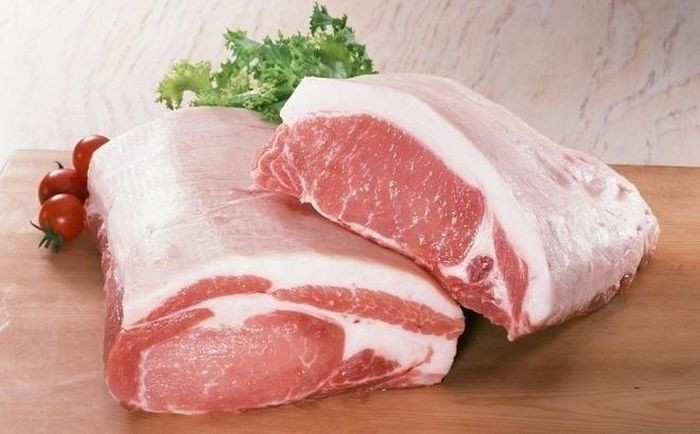Clean meat is meat that is not fed with growth-promoting feed, has no drug residues and chemicals that pigs eat, has no parasites and bacteria, and no preservatives.
Pork accounts for 30-50% of each family's weekly diet, but with a series of information about antibiotics, salbutamol, and clenbuterol being added to food to stimulate pigs to grow quickly and create lean meat, consumers are confused.
To avoid health risks, according to national general practitioner Bui Dac Sang - Vietnam Academy of Science and Technology, Hanoi Oriental Medicine Association, users need to carefully check meat to avoid cases of pork mixed with eggs of tapeworms.
Those who buy rice pigs should not eat the meat because it is very dangerous. In addition, pork spoils quickly, so you should choose fresh meat. The meat of healthy pigs is usually light pink to dark red. The meat is firm, not mushy, elastic, and does not ooze or slime. Pressing your finger into the meat creates an indentation but leaves no trace when you lift your finger.
Clean meat is meat that is not fed with growth-promoting feed, does not contain drug residues and chemicals that pigs eat, does not contain parasites and bacteria, and does not contain preservatives. The easiest way for families is to find a reputable place to buy meat with a known origin. In case you have to buy at a flea market, you should keep in mind a few tips below to avoid buying pork that does not meet hygiene and food safety standards.

Clean meat is meat that is not fed with growth hormones, and does not contain drug residues or chemicals.
Identify pork fed with growth promoters and lean meat additives
Mr. Sang said that clean pork usually has thick skin and thick fat. However, some places have imported super lean pigs, so consumers should not confuse super lean pork with super lean pork due to chemicals. To distinguish between these two types of meat, you can rely on your senses and feelings when processing.
Taste: When raw, super lean pork has a fishier smell than clean pork.
Check the fat layer: Super lean pigs usually have a thin layer of fat under 1cm and loose, the lean part sticks close to the skin. Normal pork fat is 1.5 - 2cm thick, clear white to ivory, crispy and not greasy like pork fat fed with growth-promoting bran. Therefore, if you observe that the meat is all lean, the lean and fat parts are separate, you should not buy it.
Color: Clean pork has a bright pink color while super lean pork is often an unusually deep red color, bright and shiny. The skin may have red spots.
Check the meat: With clean pork, the meat is firm, has high elasticity when pressed, the meat fibers are even, and the cut surface of the meat is dry. Meat containing banned residues is often drier, harder, and less elastic. Pigs that eat lean meat will feel like there is water inside, the lean meat will form a lump, and when sliced, yellow liquid may flow out.
Another simple test is to cut the meat into 3-4 cm thick pieces. If it cannot stand straight, then it is meat that has been given growth hormones.
When processing: Clean pork when boiled has clear water, no dirty scum, when fried the meat expands, does not release water, has a fragrant smell. Super lean meat or meat fed with growth-promoting feed when boiled often has a lot of scum, the water has a foul smell, when fried it releases a lot of water, and is dry to eat. If the pig is fed antibiotics by the farmer, when cooked the meat will give off a recognizable antibiotic smell.
Identify meat with preservatives
When meat is spoiled, some sellers often "magically" turn spoiled meat into fresh meat by marinating it with borax, saltpeter... to deceive consumers' senses. When marinated with these substances, the meat will look bright red but will no longer have the natural stickiness, the meat fibers will be firm, hard, and lose elasticity.
In addition, when cut deep inside, the meat is quite soft, oozing liquid, slightly dark in color, and has a smell. This type of meat when washed will turn pale and have a very unpleasant fishy smell, the fat will be yellow. When cooked, the spoiled meat juice will be cloudy, smell bad, the surface fat will separate into small circles instead of large floating scum like fresh meat.
Identify meat infected with parasites
The most common is pork infected with worms. Consumers need to observe carefully before buying, especially meat with fat tendons such as shoulder meat, thigh meat, head meat... If you see grains like sticky rice grains (worm larvae concentrated in bags), you should not buy.
When slicing meat, users can cut the meat along the grain. If they see small white sacs between the fibers of the meat or muscle, they should be removed immediately and should not continue processing because this food has been infected with tapeworm cysts.
According to VTC News